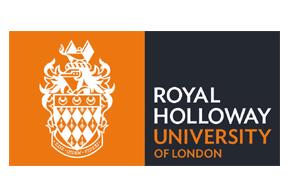Hello, my name is Andrew Whalley, I teach Marketing Metrics, Digital Marketing and Sports Marketing on the MA Marketing at Royal Holloway. I’m going to present a few thoughts on the changing face of social media and its impact on marketing, and in particular in an area of growing significance for businesses, using the internet as a source of competitive advantage through netnography.
A revolution in both marketing thought and practice is at hand; the new social world is online.
Internet penetration rates continue to rise, whilst the 'net isn't ubiquitous yet, within industrially developed and developing nations it is almost so. Reasonably, we can say that well over a billion people now participate in various forms of social media. Indeed to the point that even non-capitalist societies are embracing its power; the Communist Party of China now offer training in social media to its members so strong has been the growth of social media within China.
It is no exaggeration to say that we are in the midst of a technology-led communal revolution. The need to understand this, to apply a PESTLE approach to marketing per se, continues to grow. The implications for marketers, marketing researchers, and managers of all stripes are vast. Consumers are sharing all sorts of emotions and information with each other about an incredible panoply of products, retailers, and brands. Consumers are not just being 'positioned' by our marketing they are co-producing value in terms of the brands and their values; Burberry and its problems with 'Chavs' is a case in point.
The online environment offers us nearly unlimited access to consumer-to-consumer communications that are:
- relevant and detailed
- from a naturally-occurring context
- unelicited
- obtained in an unobtrusive way, and
- obtainable in a timely, effective, and efficient manner
This data is raw, authentic, spontaneous, indigenous, unforced, unadorned, unfiltered, powerful, highly involved and often spectacularly creative. It has the potential to be a Marketer's dream source; valid, reliable, accessible and cheap!
Marketers are beginning to build social media into their marketing plans, their advertising and promotional campaigns. But in terms of consumer insight, marketing is dominated by the same old methods; Focus groups, Surveys, Data models. Whilst these are tried and trusted, reliance on them when we have also have social media sources is myopic, to paraphrase Ted Levitt.
The move to build rich understanding with the cornucopia of online consumer data is just beginning; it provides us with a range of overlapping opportunities. Applied to business and marketing needs, netnography builds deep consumer insights that provide:
- All-embracing descriptions of the marketplace—segments, product groupings, attribute sets
- Realistic comprehension of online communication—categories, trends, symbols, images
- Social understandings of consumer choice—influencers, adopters, WOM properties
- Natural views of brand meaning—decoding authentic consumer language and terms, as well as visual
- and audiovisual analysis
- Embedded discoveries of consumer innovation—based in lead user, inno-tribe, and prosumer creativity
Compare netnography to the focus group or survey data dominating the world of consumer insight research.
- Focus groups offer detailed and relevant data. But they are elicited, obtrusive and completely artificial.
- The one-time group dynamics are synthetic and strange.
- Surveys are artificial, obtrusive, and elicited. We often have no way of knowing if our survey questions are relevant to the consumers’ world.
- Both focus groups and surveys can be expensive. Consider that a national set of focus groups can easily run in the hundreds of thousands.
Recognizing the implications of the development of the internet as a socialising media, Lusch and Vargo (2006) argue that cocreation will increasingly induce firms to collaborate with customers to cocreate the entire marketing programme, indeed many are now running 'fan' sites for their products and brands. Such developments are also consistent with open-source innovation and 'crowd-sourcing' (Etgar 2008; Von Hippel 2005) and with emerging corporate practices that tap into brand communities. Good examples of this are LEGO, which explicitly sought and harnessed consumer innovation to refine the successful LEGO robotic kit Mindstorms (Koerner 2006), and skinnyCorp’s Threadless, which manufacturers consumer-designed and critiqued T-shirts.
This means marketing needs an edge - a tool to help understand how and what is being said in what context about brands, products, etc - that's where netnography comes in; as a Marketer’s secret weapon to customer understanding. This is also why this topic is highly relevant to those studying for business degrees – the internet is an immersive media where customers to talk to each other and to businesses, understanding this and building it into the marketing planning and strategy of businesses is fast becoming a core competence of the contemporary marketer.


Why is digital marketing so important? Because it is not only a rapidly growing force in the current marketing playing field, it is set to be the future of marketing, and it seems likely that digital media will soon replace more traditional forms altogether.
ReplyDelete